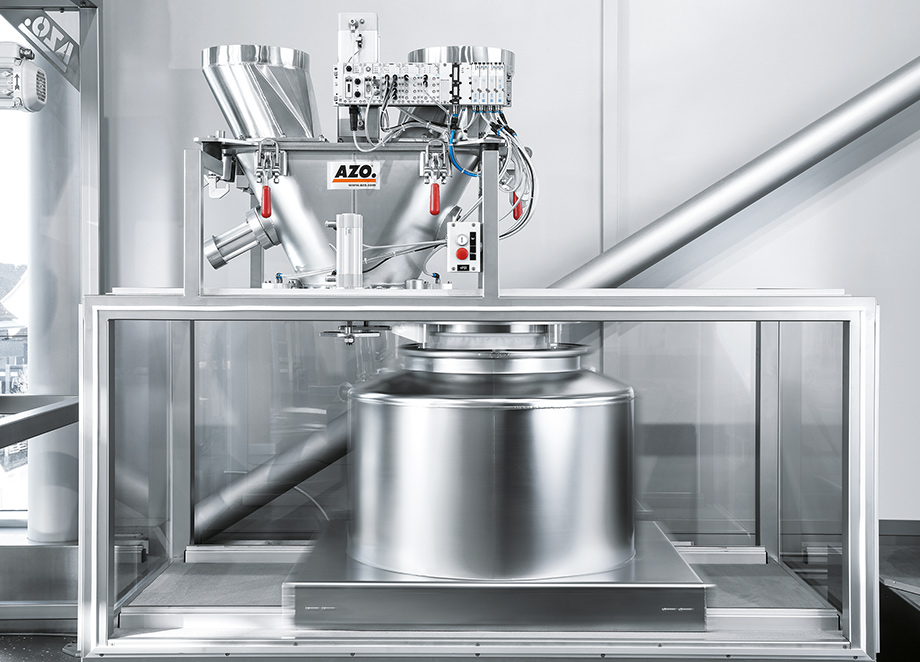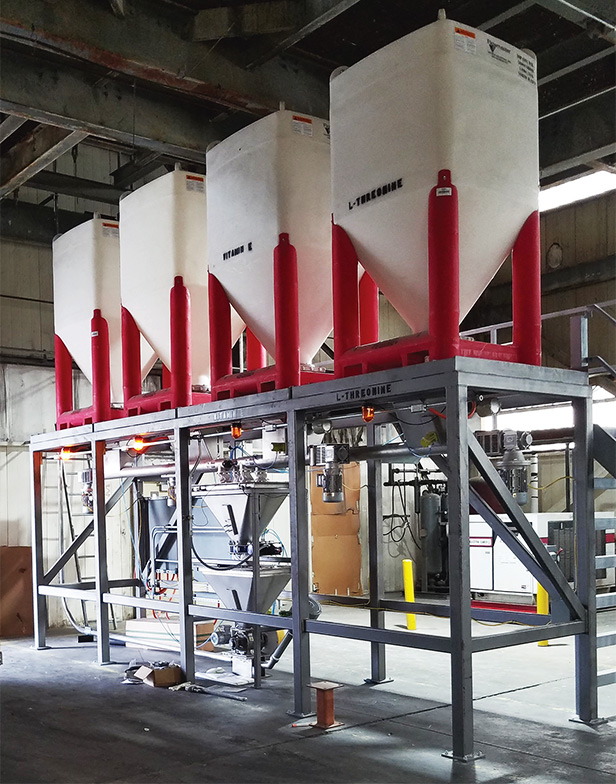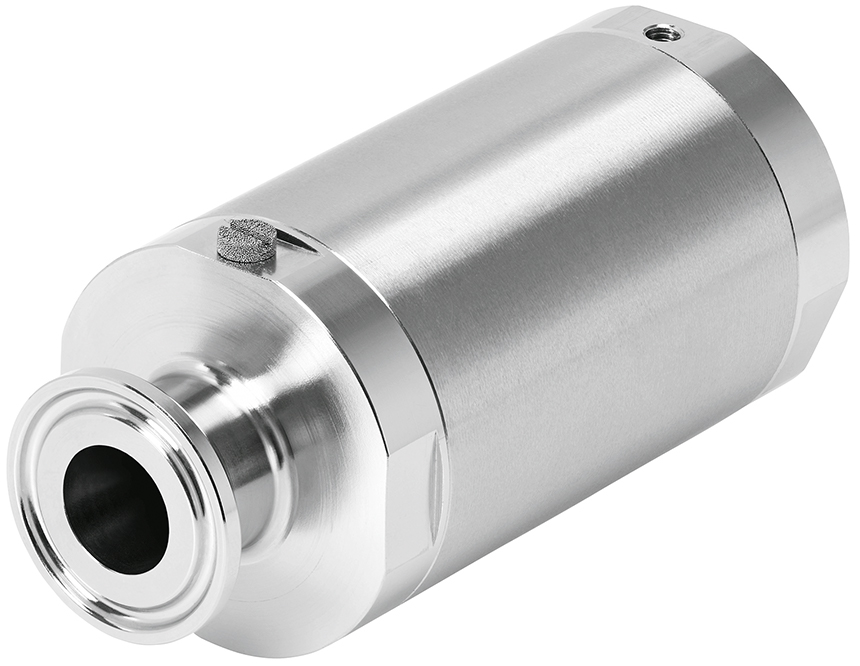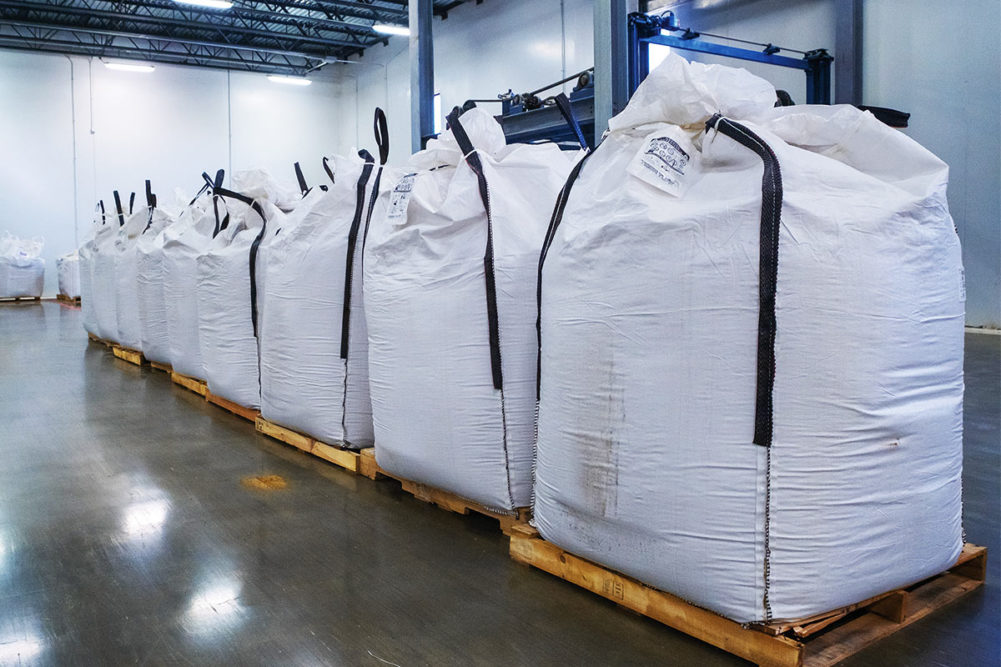This article was published in the June 2020 issue of Pet Food Processing. Read it and other articles from this issue in our June digital edition.
Dry bulk material handling refers to the movement, processing, measurement and storage of dry ingredients or finished dry products that are handled in bulk. Refining this process enables pet food and treat processors to handle dry bulk materials with greater accuracy, efficiency, reliability and safety.
“Dry bulk material handling ranges from storage of product ingredients to material movement and feeding, material size reduction, weighing, mixing, drying, movement or transport and other processes,” explained Joe Lewis, marketing, Sterling Systems & Controls, Inc., Sterling, Ill. “In addition, dry bulk material can be a powder or granular material of a wide range of sizes. The dry bulk material can have a range of physical properties that need to be considered when storing or processing the material.”
Handling options
Thanks to the wide variety of materials used in pet food and treat processing, it is necessary for processors to utilize a diverse range of dry bulk material handling systems.
“Depending on the material and part of the process, you will see just about every type of conveying media out there: bucket elevators, bucket conveyors, screw conveyors, slat conveyors, food grade belting, plastic modular belting, vibratory feeders and pneumatic conveyors,” said Pete Ensch, chief executive officer, WEM Automation, LLC, New Berlin, Wis.
Zach Turner, sales engineer, food, AZO, Inc., Memphis, Tenn., highlighted the unique benefits of mechanical and pneumatic conveying.
“The most common options with regard to ingredient delivery are mechanical conveying and pneumatic conveying,” Turner said. “The former is known for its ability to keep blends together and gently move products, while the latter is preferred for its cleanliness, efficiency and low-maintenance operation. At a high level, two types of pneumatic conveying are vacuum and pressure. While each of these has its pros and cons, there’s usually a way to appropriately convey products that are granular or powdery in nature.”

“Batching systems can include semi-automatic and automatic ingredient batching systems,” Lewis said. “Batches can be fed into containers for manual transport to a mixer or can be automatically transported to the mixer by pneumatic or mechanical means. Bulk bag filling systems are those pieces of equipment that bag a typically finished product in flexible intermediate bulk container (FIBC) bags.
“Bulk bag unloading or discharging systems can include everything for the simple discharging of bulk bags into transport hoppers, to include weighing, tramp metal magnets for metal extraction, dust collection, hoists, bag massagers to promote emptying of bags, and also to include smaller bag packaging,” Lewis explained. “Often bulk bag unloading is incorporated into ingredient batching systems directly.”
Challenges of dry bulk material handling
The handling of dry bulk materials presents pet food and treat processors with a number of challenges that must be addressed.
“Many manufacturers have SKUs with dozens of ingredients, presenting the challenge of how to handle so many different minor/micro ingredients,” Turner said. “How do I consistently staff manual weighing of 40 to 50 ingredients each and every shift? Can this many ingredients be automated? If we automate them, can we ensure they will be accurately fed into the process? What about cross-contamination between products? These are challenges we routinely address with AZO technology.”
Lewis said some challenges are related to the physical handling of the material including the material density, flow characteristics, cohesiveness, the hygroscopic nature of the material and other considerations.
“Challenges also include the accuracy of feeding dry materials as ingredients into batches, and record keeping of batches and ingredients,” he said.
Steve Bain, industry segment manager, food and beverage, FESTO Corporation, Islandia, N.Y., emphasized the challenge of maintaining food safety when handling dry bulk materials.
“Bulk transfer often has considerably more surface area and potential contamination points than other processes. Many older systems aren’t designed with food safety as a primary concern,” said Steve Bain, FESTO Corporation.
“Maintaining food safety during the entire transfer process can be difficult,” Bain said. “Bulk transfer often has considerably more surface area and potential contamination points than other processes. Many older systems aren’t designed with food safety as a primary concern.”
Ensch agrees that food safety and cross-contamination are major concerns for pet food and treat processors.
“Over the past several years, the proliferation of ingredients and finished product SKUs have led to the need for improved controls to prevent cross-contamination and cycle cleanouts,” he said. “In some cases, this can be done by using flush materials, other times manual cleaning of equipment, or even automated clean in place (CIP) equipment and processes are used.”
Productivity and speed are additional challenges that processors must address in order to maximize efficiency.
“Like many manufacturing processes, there are design conflicts such as the need to move product really fast without damaging it in the process,” Ensch said. “The number of ingredients and subprocesses in a pet food facility require a great number of different conveyor media. That is why you see so many different material handling solutions applied.”
Modern dry bulk material handling equipment helps address these challenges in a number of different ways. One example is ingredient batching systems that automate batching control.
“Ingredient batching systems eliminate the inaccuracies of manual batching, increase batching throughput and production cycle times and enhance product safety through material traceability and lot tracking,” Lewis said. “Integrated controls can be designed to be easy to use, can include remote supervisory control and can integrate with corporate ERP [enterprise resource planning] systems.”
In fact, many of the improvements in bulk material handling technologies and equipment are related to automating certain processes.
“With the advent of Industry 4.0, vast amounts of data are available and collected through the control system in real time,” Ensch said. “The automation can make decisions based on preconfigured algorithms to divert contaminated or adulterated product. The ability to do so can reduce scrap and the cost associated with post-production inspections.”
Turner added that automating minor and micro ingredients can help mitigate or eliminate risks associated with insufficient staffing, inaccurate batching and accidental cross-contamination.
Careful selection of components can also help address food safety challenges.
“Many bulk material handling machine builders are actively upgrading components with food safety in mind,” Bain said. “In particular, using stainless steel or corrosion resistant materials and components with NSF-H1 grease and FDA-approved polymers should all be considerations.”
Plant efficiency and product quality
Dry bulk material handling systems can have a huge impact on overall plant efficiency and product quality.
“Ingredient batching systems eliminate the inaccuracies of manual batching, increase batching throughput and production cycle times and enhance product safety through material traceability and lot tracking,” said Joe Lewis, Sterling Systems & Controls, Inc.
“Any time there is a transfer of material from one material handling system to another or one process to another, there is always the chance of lost or damaged material,” Ensch explained. “Product that falls between processes is lost material and needs to be disposed of. It leads to inventory variances and cost because it usually involves labor to deal with housekeeping and disposal services.”
One way in which pet food and treat processors can increase processing efficiency is by implementing preventive maintenance plans.
“Having good preventive maintenance procedures that include maintaining your conveyors and smooth transfers can greatly improve the plant’s overall efficiency,” Ensch said. “Oftentimes, material handling systems are overlooked and not proactively addressed, leading to unscheduled downtime.”
Food safety best practices
Turner highlighted the effect of automation on plant efficiency and the safety of the end product.
“Plants that implement minor/micro automation experience significant reduction in costs associated with scrap and rework of products that fell victim to typical mistakes and oversights of manual processes,” he said. “The food is safer, the production is faster and the facility is cleaner.”
Bain suggested compressed air used in pneumatic conveying should not be overlooked.
“Pay attention to compressed air quality for dense-phase pneumatic conveying systems,” Bain said. “If you consider the compressed air to be an ingredient, or at least a potential food safety hazard, then it’s important to ensure that food or food ingredients are not contaminated with unlawful indirect food additives. In addition to the air quality, ensure any valves or control systems are also meeting food quality requirements if these processes are deemed potential hazards. Utilizing aseptic valve technologies such as the VZQA pinch valve can help substantially in this effort.”
Mettler Toledo, Columbus, Ohio, a supplier of product inspection equipment, manufactures Gravity Flow (GF) metal detectors that help improve food safety.
“As product falls freely through the metal detector’s inspection zone, the unit detects metal contaminants and the contaminated portion of the product is quickly segregated from the main product flow and removed,” explained Sarrina Crowley, marketing communications manager, Mettler Toledo.
Automation also plays an important role in ensuring food safety and product quality.
“In addition to picking the right conveyor technology and selecting the right food grade materials, design automation and control can be a major part of best practices around food safety,” said Pete Ensch, WEM Automation, LLC.
“In addition to picking the right conveyor technology and selecting the right food grade materials, design automation and control can be a major part of best practices around food safety,” Ensch explained. “With consumers demanding a wide variety of pet food, it is more and more important to not inter-mix or cross contaminate materials. Automation control systems can be programmed to prevent materials from becoming cross contaminated or automatically run a flush or cleaning sequence.”
Advancements in technology
Dry bulk material handling systems are continuing to evolve as new technologies become available.
“We’re seeing much more demand for sensors and monitoring as companies move toward Industry 4.0,” Bain said. “...Intelligent technologies including compressed air monitoring systems are becoming much more prevalent in the bulk material handling industry.”
Lewis said automation and data management technologies are also evolving as regulatory requirements for safety and traceability continue to increase. High demand for innovative pet foods and treats ensures automation and data management requirements for bulk material handling solutions will continue to grow.
Find more articles related to pet food processing equipment on our Equipment page.



